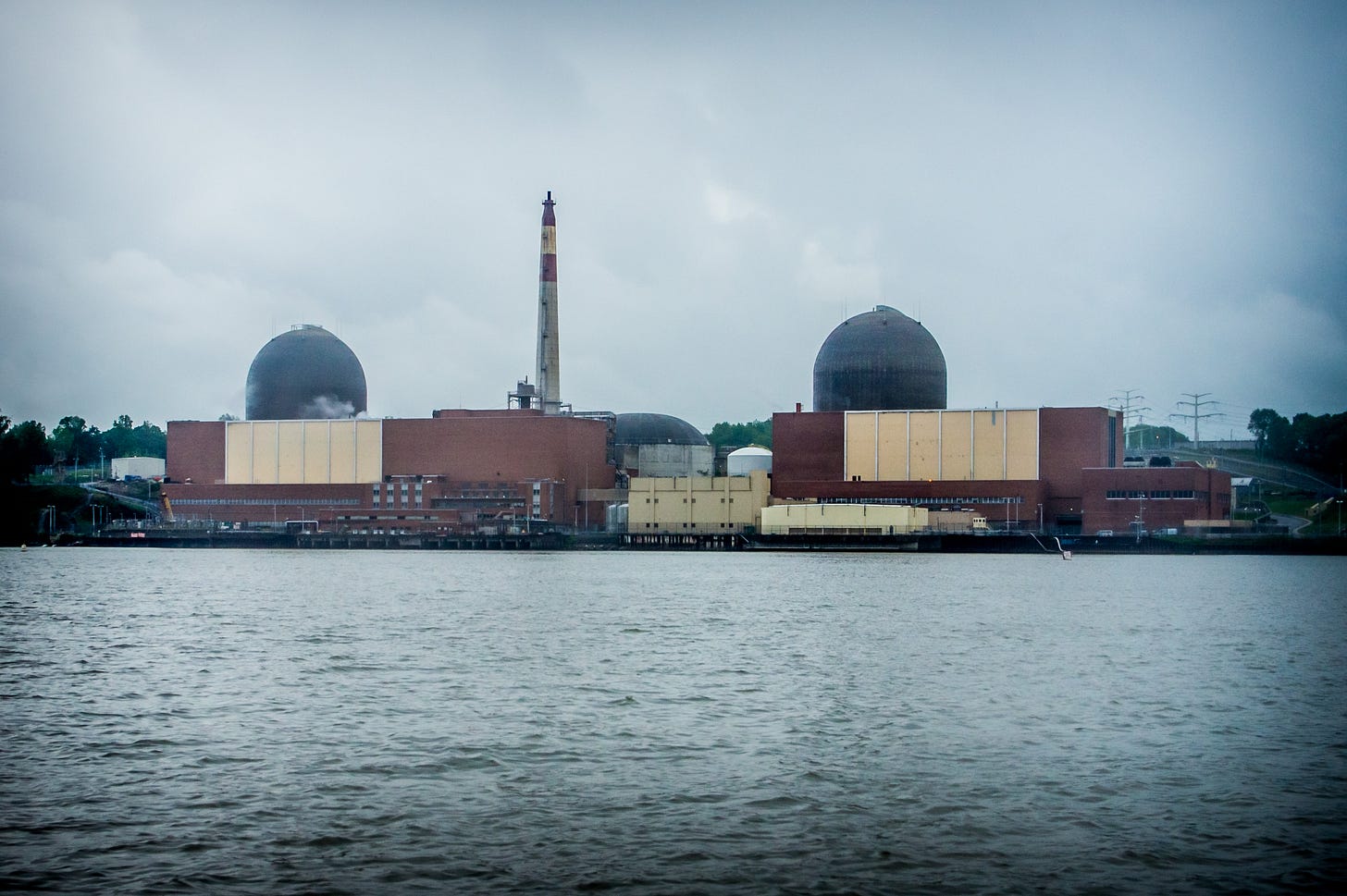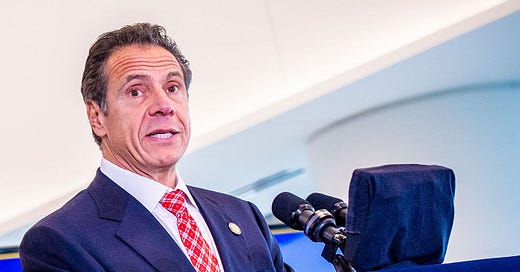Andrew Cuomo defends closing down NYC’s nuclear power plant
EXCLUSIVE: Despite the city’s electricity problems, the former governor says shuttering Indian Point was the right call.

Andrew Cuomo, the frontrunner for the Democratic nomination for New York City mayor, has said he stands by his past decision as governor of the Empire State to shut down the nuclear power plant that once provided most of the five boroughs’ carbon-free electricity.
In an audio recording of the candidate speaking in Harlem on Friday that his campaign sent this newsletter on Saturday evening, Cuomo said the movement to close the Indian Point atomic generating station started long before he served three terms as New York’s governor after a stint as the state’s attorney general.
“Do you understand the danger that Indian Point poses? It would be catastrophic if anything happened at Indian Point,” Cuomo said. “It is the nuclear plant located in the most dense area in the United States of America.”
Public concern over the power station grew after the Sept. 11 terrorist attacks. The plant was built to withstand a plane crash. Yet newspapers blared headlines warning of a “Chernobyl-on-Hudson.” Cuomo echoed that sentiment.
“Post 9/11, the terrorist risk was significant and scientists spoke about the terrorist risk,” he said. “Nobody knows what would have happened if that plane went into Indian Point as opposed to the trade centers, right? So, the potential risk of life is extraordinary and that’s why, 25 years ago, a movement started to close Indian Point.”
Cuomo said he supports nuclear power – just not in a densely populated area where, around the time he backed the closure, he owned a house.
“New York State has a lot of nuclear power, but not in that dense an area” he said.
Listen to Cuomo defend his decision to close Indian Point here:
“There are two sides on nuclear power,” he added. “Some people are against nuclear power. I’m not against nuclear power… we have very large plants upstate. But nuclear power within a stone’s throw of New York City? The risk is too high.”
In the 71 years since the first nuclear power plant opened, just one of the industry’s three major accidents has come with a confirmed death toll: the 1986 Chernobyl meltdown in Soviet Ukraine. The reactor, an experimental unit with a uniquely unstable design, had no containment vessel to keep the radiation from the meltdown from spreading. Just 31 people died as a result of the accident. While estimates vary for how much deadly thyroid disease and cancer in the surrounding area can be linked to the contamination, the World Health Organization pegs the figure at around 4,000.
The other two major accidents had no confirmed death toll. Repeated studies turned up no evidence that the small amount of radiation released during the 1979 Three Mile Island accident caused any disease, much less premature death – though activists who oppose nuclear power have made claims to the contrary. While upward of 700 mostly elderly Japanese died as a result of stress from the evacuation, just one emergency worker who helped contain the 2011 Fukushima meltdown died of cancer years later, though it’s not clear the disease was caused by radiation exposure. A Japanese law promised compensation to any worker who became sick with cancer after the accident without any proof of a causal relationship between the site and the tumors.
The very science that has long underpinned American regulators’ understanding of how radiation causes cancer is widely considered faulty, as this sharp piece in the newsletter Works in Progress explains.
By contrast, the environmental, economic and public health effects of closing nuclear plants are difficult to contest.
Virtually all the carbon-free electricity Indian Point produced for New York City was replaced with natural gas. Gas, which is mostly made up of the powerful greenhouse gas methane, generates air pollution and comes with a volatile price – something New Yorkers experienced firsthand once the global market went into chaos following Russia’s invasion of Ukraine less than a year after Indian Point’s last reactor shut down. Complicating the picture further, Cuomo as governor blocked a new pipeline that would have carried gas from the fracking fields of Pennsylvania into New York, forcing the state to rely on more expensive methods of transporting the fuel to its power plants.
New York’s grid operator has recently warned that the city is at growing risk of blackouts as a result of electricity shortages – and prices are going up as gas demand grows faster than the supply
To combat this, Whitney Tilson, the financier making a long-shot bid for Cuomo’s moderate Democratic voters in the June 24 mayoral primary, told me he’d push to reopen Indian Point.
Once I published that newsletter earlier this evening, I reached out to every candidate for mayor, asking their campaigns to respond to Tilson’s proposal.
So far, only Cuomo’s spokesman, Rich Azzopardi responded, and sent me the audio clip.

PROGRAMMING NOTES: My apologies for popping into your inbox twice in one night, but this is news and I believed it was important to get it out there.
If you support timely reporting like this, please consider upgrading to a premium subscription today. Buying a $60 annual subscription saves you 20%. Now, is that a deal, or what?
Signing off from rainy Bay Ridge, where the sun is peeking through clouds.




I will point that Bradwell one of the UK designated and preferred sites for new nuclear(set out during the Labour govt in the 2000s) is about 45 miles from Central London compared to the 35 miles Indian Point is from Midtown Manhattan.
The only high risk thing that should not be anywhere near New York City is Andrew Coumo.